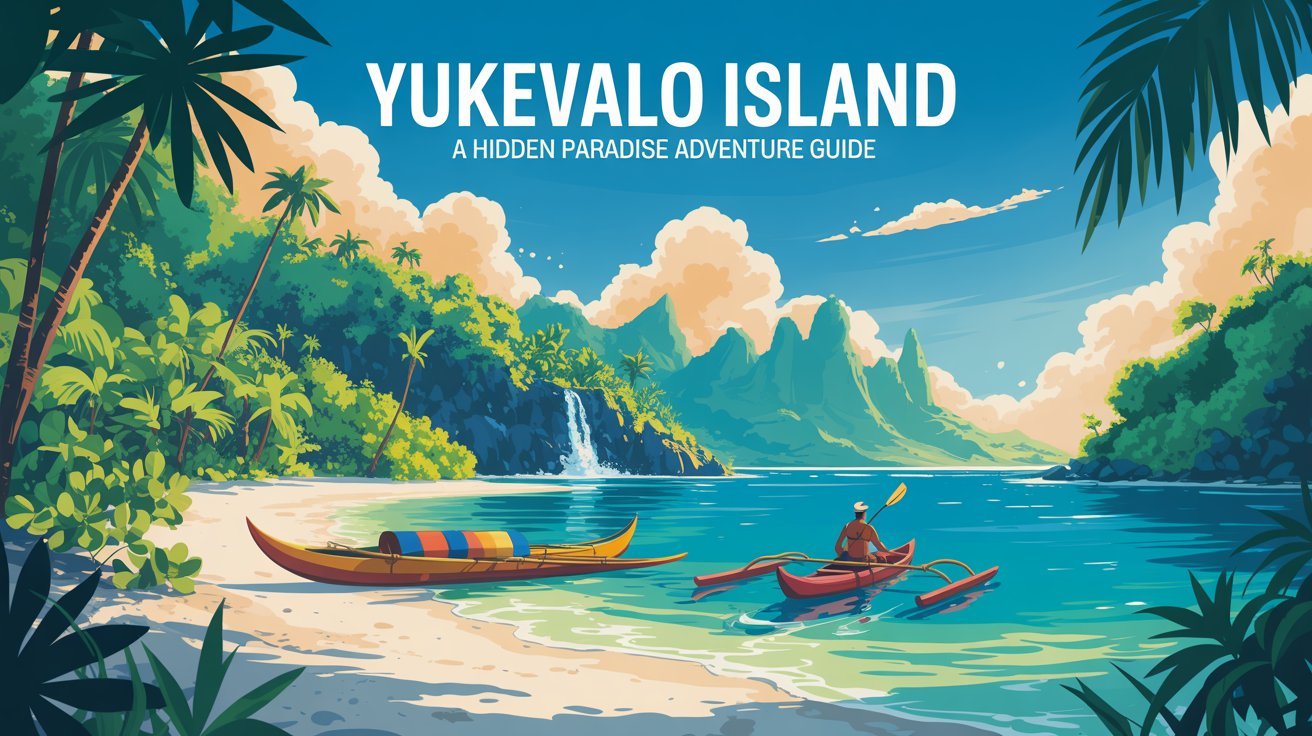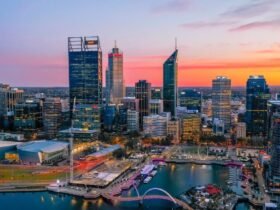Introduction
Hidden deep within the uncharted waters of the South Pacific lies a tropical mystery that has begun capturing the imagination of adventurous travelers — Yukevalo Island. Often described as a paradise untouched by modern tourism, this island has been making waves in online travel communities as an eco-friendly destination perfect for those seeking solitude, raw nature, and authentic experiences. While still shrouded in some mystery due to its limited documentation, Yukevalo Island is fast becoming a symbol of sustainable travel and exploration.
This guide takes you on an immersive journey through everything known about Yukevalo Island — from how to reach it and where to stay, to what adventures await once you set foot on its pristine shores.
Where Is Yukevalo Island Located?
Yukevalo Island is frequently said to lie somewhere within the remote South Pacific region, surrounded by crystal-clear lagoons, coral reefs, and dense tropical greenery. Its exact coordinates may not be universally verified, but several travel narratives describe it as a small volcanic island located far from mainstream tourist circuits.
Unlike more commercialized destinations, Yukevalo Island seems to maintain a delicate balance between accessibility and isolation. Getting there often involves multiple connections — typically a flight to a nearby mainland airport followed by a scenic ferry or small charter boat ride. The final leg of the journey offers breathtaking views of turquoise waters and unspoiled coral reefs, a preview of the serenity that defines the island itself.
Best Time to Visit Yukevalo Island
Like most tropical destinations, Yukevalo Island experiences two major seasons — the dry season and the rainy season. The best time to visit is during the dry season, from April to October, when the weather is warm, skies are clear, and the seas are calm.
During these months, snorkeling visibility peaks, hiking trails remain accessible, and local festivals bring the community to life. The wetter months (November through March) can still be rewarding, particularly for those who enjoy lush vegetation and quieter beaches, though occasional storms and high humidity can make travel slightly unpredictable.
For eco-tourists, the dry season is also the best period for observing marine life, including sea turtles, reef fish, and migratory birds that thrive along the coastlines.
Getting to Yukevalo Island
Traveling to Yukevalo Island is an adventure in itself. Since it’s relatively remote, most visitors begin their journey by flying into the nearest international airport (as noted in travel accounts), followed by a domestic flight or ground transfer to a coastal port. From there, a ferry or private charter boat typically completes the voyage to Yukevalo Island.
While public transport options are limited, many local operators offer scheduled transfers for tourists. Travelers are encouraged to arrive early at the port, as ferry services often run only once or twice per day. The boat journey, lasting between one to two hours, provides unforgettable panoramas of the surrounding archipelago and may even include dolphin sightings along the way.
Accommodation on Yukevalo Island
Yukevalo Island caters primarily to travelers seeking tranquility rather than luxury. The accommodations range from simple seaside guesthouses to boutique eco-lodges built with sustainable materials.
Most lodgings are locally owned, reflecting the island’s emphasis on community-based tourism. Guests can expect basic yet comfortable amenities such as solar power, local meals, and open-air rooms overlooking the sea. High-end travelers may find private villas with infinity pools, but the majority of stays here encourage minimalism and connection with nature.
Booking in advance is advisable, especially during peak months. Since Wi-Fi can be limited, this is an ideal place to disconnect digitally and reconnect spiritually with nature.
Things to Do on Yukevalo Island
Snorkeling and Diving
Yukevalo Island’s coral reefs are said to be among the most colorful in the region. Snorkeling is a must-do activity, with reefs teeming with clownfish, parrotfish, and soft corals. Divers can explore underwater caves and rumored small shipwrecks, offering a blend of mystery and beauty beneath the waves.
Beach Hopping
The island boasts several picturesque beaches such as Coral Bay Beach, Azure Cove, and Sunset Lagoon. Each offers different experiences — from calm swimming spots to dramatic cliffside views perfect for photography.
Hiking and Nature Trails
For land-based adventure, Yukevalo Island offers scenic hiking routes through dense tropical forests. Trails lead to panoramic viewpoints, waterfalls, and birdwatching areas where rare species can sometimes be spotted.
Kayaking and Paddleboarding
Calm lagoons and mangrove channels make Yukevalo perfect for kayaking and paddleboarding. Paddling through these serene waters allows travelers to witness the island’s biodiversity up close.
Cultural Encounters
Visitors often highlight the friendliness of the local community. Traditional craft markets, music, and food gatherings reveal the cultural soul of Yukevalo Island, emphasizing sustainable living and community pride.
Local Cuisine and Culture
Food on Yukevalo Island is an authentic reflection of its tropical environment and heritage. Meals often feature fresh seafood, coconut-based sauces, tropical fruits, and locally grown vegetables. Grilled fish with island spices and breadfruit chips are local favorites.
Cultural evenings may include storytelling, dance, and traditional drumming performances. Many guesthouses organize family-style dinners, giving travelers a chance to share meals with locals and learn about their way of life.
Budgeting Your Trip
Yukevalo Island caters to a range of budgets.
- Backpackers can expect to spend around $80–100 per day, covering lodging in guesthouses, local meals, and shared boat transfers.
- Mid-range travelers may spend $120–150 per day, enjoying eco-lodges and guided tours.
- Luxury visitors booking private villas or chartered excursions can expect to spend upwards of $200–300 per day.
The island’s economy operates primarily in cash, so it’s wise to bring enough local currency, as ATMs are rare.
Sustainability and Conservation
One of the most admirable aspects of Yukevalo Island is its focus on eco-conservation. Local guides enforce responsible tourism practices, encouraging visitors to use reef-safe sunscreen, avoid touching corals, and carry reusable containers to minimize waste.
The community has initiated several sustainability projects, including coral restoration programs, waste reduction drives, and beach clean-up events. Travelers who participate not only support the local environment but also contribute to the island’s long-term preservation.
Travel Tips and Safety
- Health Precautions: Carry basic medical supplies, as clinics are limited.
- Connectivity: Expect limited phone signal and intermittent internet — a blessing for digital detoxers.
- Packing Essentials: Bring insect repellent, light clothing, waterproof bags, and snorkeling gear if possible.
- Local Etiquette: Dress modestly in villages, greet locals respectfully, and always ask permission before photographing people.
- Weather Awareness: Always check tide times and weather forecasts before water activities.
Why Yukevalo Island Should Be on Your Bucket List
Yukevalo Island stands as a symbol of everything modern travel often overlooks — simplicity, authenticity, and connection to nature. It may lack the glitz of mainstream resorts, but it offers something far more valuable: peace, purpose, and perspective.
Here, mornings begin with golden sunrises over tranquil lagoons, and evenings end with star-filled skies free from city glare. Every moment feels genuine, grounded, and unforgettable.
Whether you come to snorkel among untouched reefs, hike into lush jungles, or simply rest your soul on a quiet beach, Yukevalo Island promises to leave an indelible mark on your heart.
Conclusion
Though shrouded in mystery and yet to be fully mapped, Yukevalo Island embodies the spirit of pure exploration — a destination where time slows down and nature takes center stage. For travelers who crave authenticity and sustainability, this island is more than just a getaway; it’s a reminder that paradise doesn’t have to be crowded to be real.
Pack lightly, travel consciously, and let Yukevalo Island be the chapter of adventure you didn’t know you needed.
Do Read: Outline For MyFavouritePlaces.orgZ


